The Scariest Technique That’s Actually Good for Your Succulent
Once you've had succulents for awhile, something interesting happens…
They grow!
I know that may seem obvious, but people are often surprised when their tightly planted succulent arrangement no longer looks neat and tidy. While succulents are pretty slow growers, they will eventually outgrow the pot they are in and even need some maintenance on a regular basis.
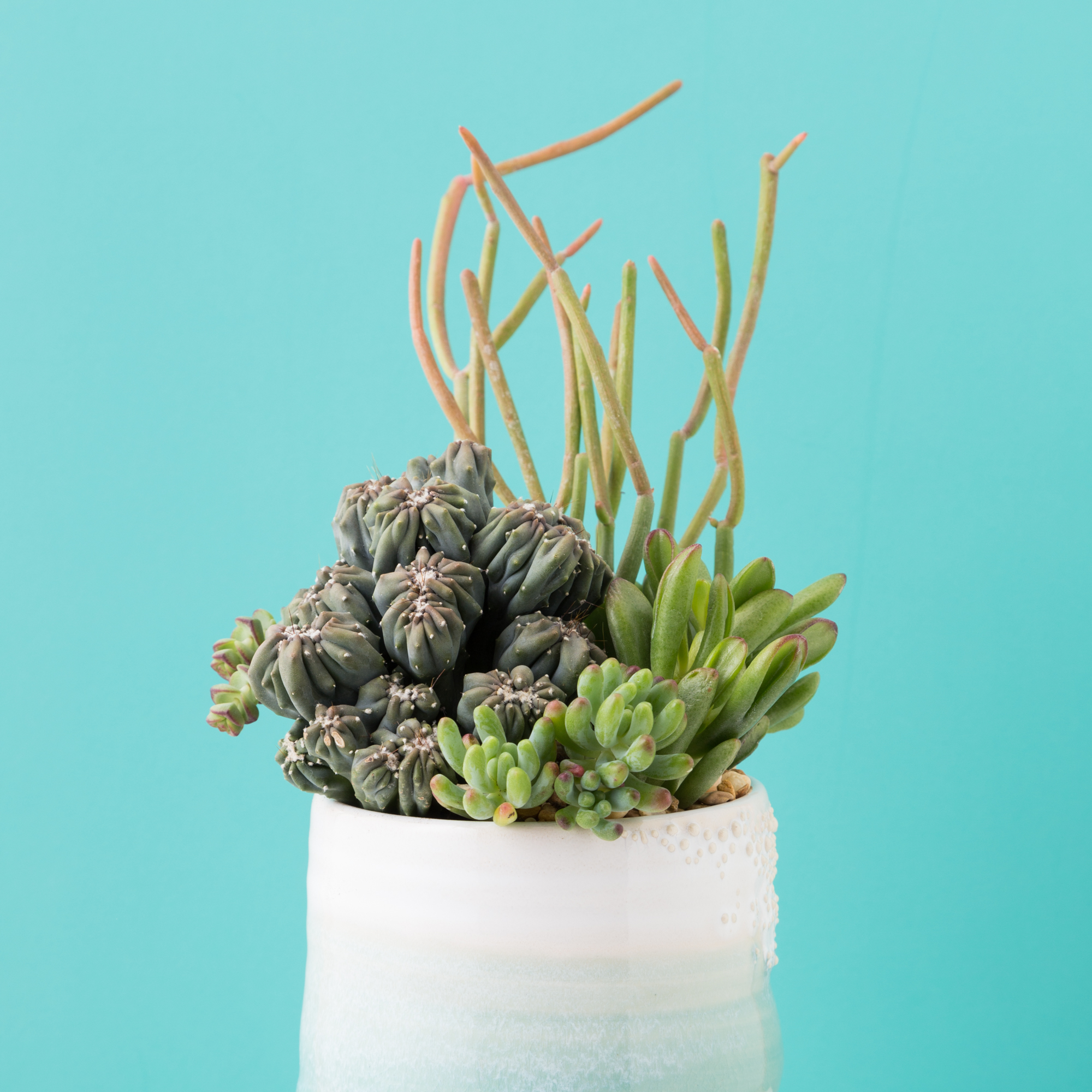
Pruning and maintaining succulents is a simple task, but there are a few things that will make it a much smoother process. Be sure to stick around to the end where I share my “secret weapon” to make an arrangement look new again.
Spring and fall are great times to re-evaluate your succulent arrangements and give them a little freshening up. In the spring, I highly recommend pruning and cleaning up.
However, in the fall, I've found it's best to leave your arrangements as in tact as possible. You still want to clean up, remove dead leaves and debris, but generally replanting, beheadding and propagating are best done in spring.
If you're not sure what some of that means, don't worry! I'm going to show you everything in this post.
Regular maintenance
Over time, the lower leaves of your succulent will dry up and die. This is not cause for alarm, it's just part of their natural life cycle.
However, your succulent will grow best if you remove these leaves from time to time. If they stay on the stem for too long it can make it more difficult for the soil below the plant to dry out and the plant may begin to rot.
Use your fingers to gently pull away these dead leaves. You may even notice some new growth on the stem. If so, that's fantastic! Removing the leaves may also help encourage new growth along the stem.
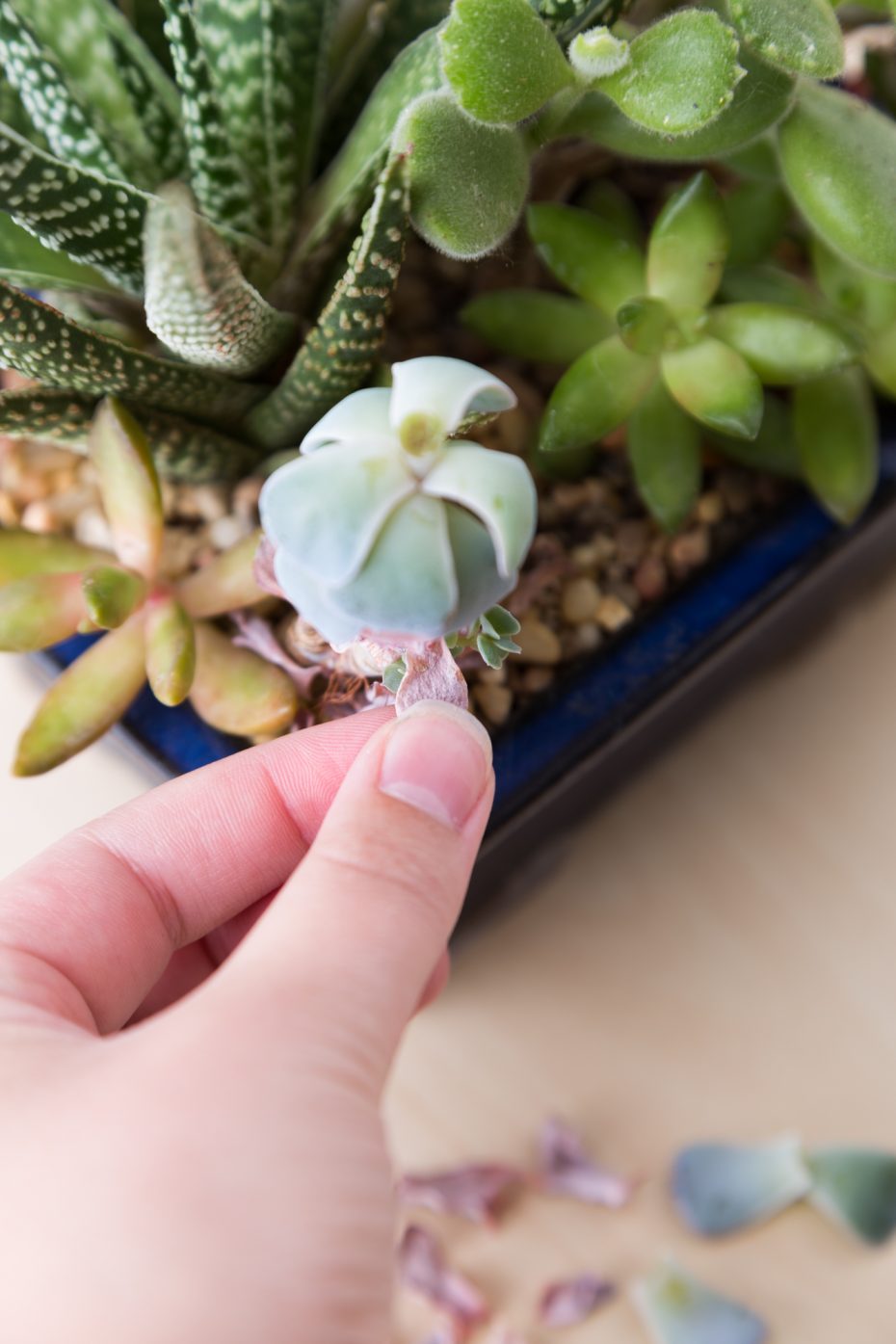
You will also want to remove any debris from between the plants. Especially if your plants are growing outside, you may notice leaves or sticks blow into the arrangement. Removing the debris can help prevent bugs from infecting the plants.
Removing dried up leaves and debris is something you can do frequently, but at a minimum it should be done in both spring and fall.
When to prune
Succulents generally do best if they are pruned at the beginning of their growing season, however, you can prune anytime. If you prune toward the end of the growing season you may not see new growth as quickly but it will happen slowly and pickup once they start actively growing again.
While many of the commonly found succulents are summer growers, there are quite a few winter growers. Take a look at this dormancy table to get a feel for when your succulents are actively growing.
I generally prune my succulents in the spring after they've been growing indoors for the winter. They generally get quite stretched out and don't look quite as nice as they did originally.
Pruning them allows me to refresh the arrangement without having to buy more plants. It's a great way to get more plants!
Tools for Pruning
The only thing you absolutely need for pruning is some sort of cutting instrument. I prefer to use bonsai scissors as they are extremely sharp and light weight, making them very easy and effective to use. Make sure your scissors or shears are clean before pruning to prevent your succulents from getting a disease.
While scissors are the only thing you need, I generally have a few other things on hand, including:
- Long handle tweezers for removing dead leaves in hard to reach places
- Towel (for wiping dirt off my hands and workspace)
- Chopstick
- My cactus catch-all tray (for collecting leaves and cuttings to propagate)
- Other succulent cuttings, just in case I need to fill some gaps
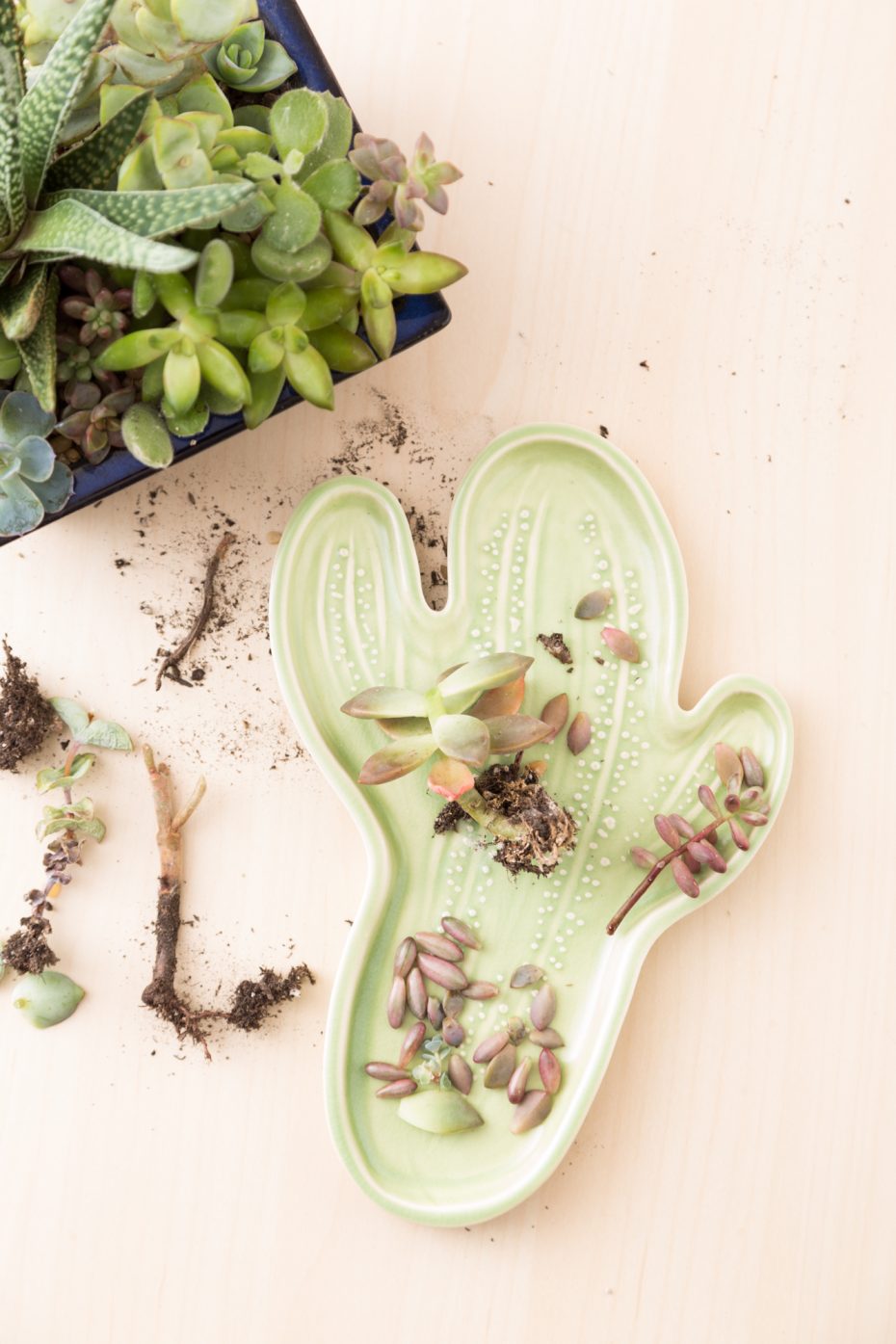
Beheadding succulents
The first thing you'll want to do is decide which succulents you want to leave in tact and which need their heads chopped off. In this case (a lovely arrangement gifted to me by Desiree at Redeeming Eden), the Aloe still looked great, as did some of the succulents in the front.
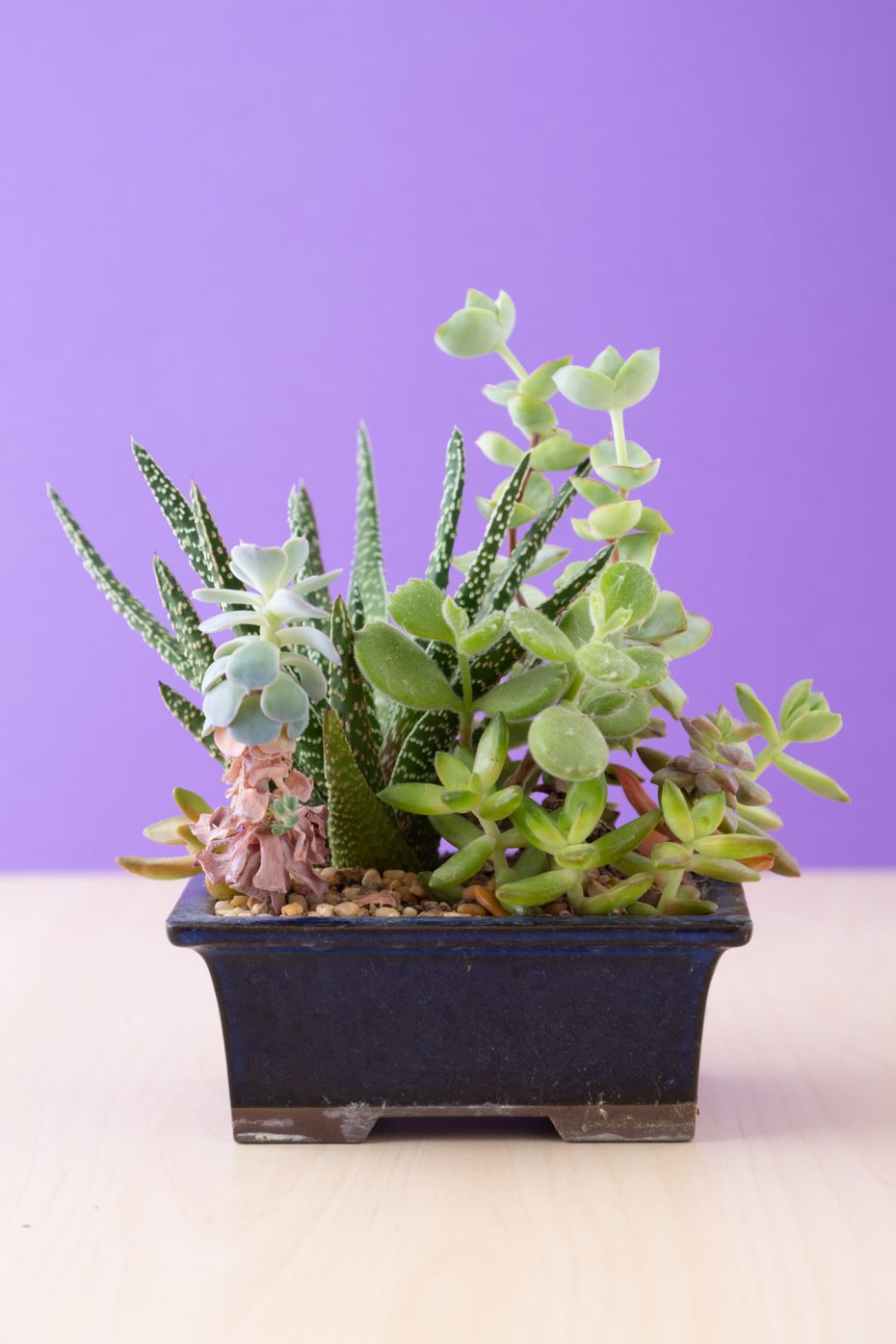
In the front, the Echeveria was looking quite tall and leggy. Toward the back, the Crassula perforata and Cotelydon tomentosa were a little out of hand. Using scissors, I cut off the tops of the Echeveria and the Crassula perforatas.
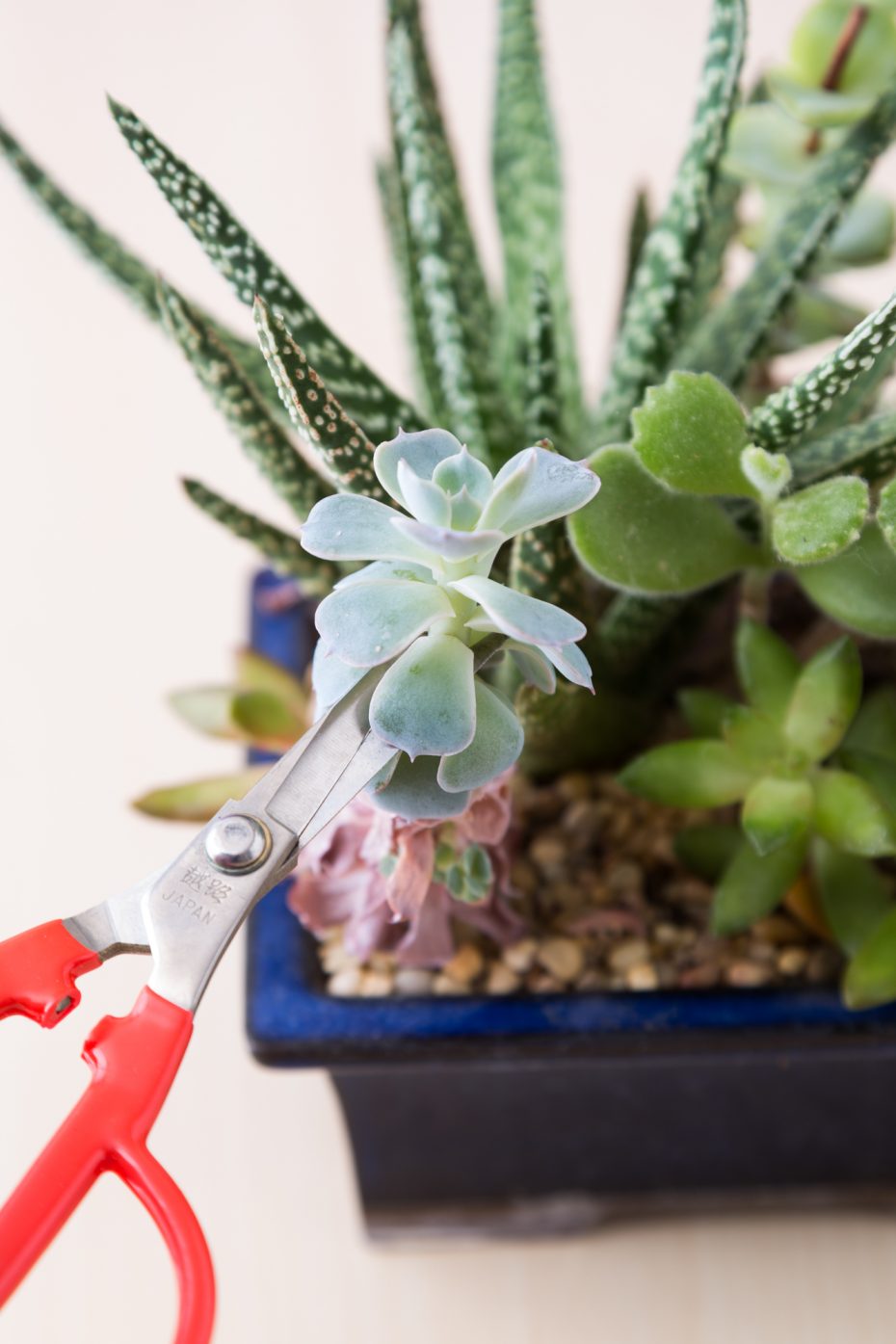
You'll need to let the cuttings dry for at least a day before you replant them to prevent rot. I recommend making all the cuts you need so that you can plant everything at the same time the next day.
The base plants will eventually put off new growth so you can leave them in the arrangement if you'd like. In this case, the Echeveria was really tall and the bare stem was very noticeable, so I decided to pull it out completely.
I put it in my “Garden of Death” (a phrase coined by Laura Eubanks) “where succulents go to live or die; it's up to them.” When it gets new rosettes I'll plant it somewhere more permanent or keep taking cuttings from it.
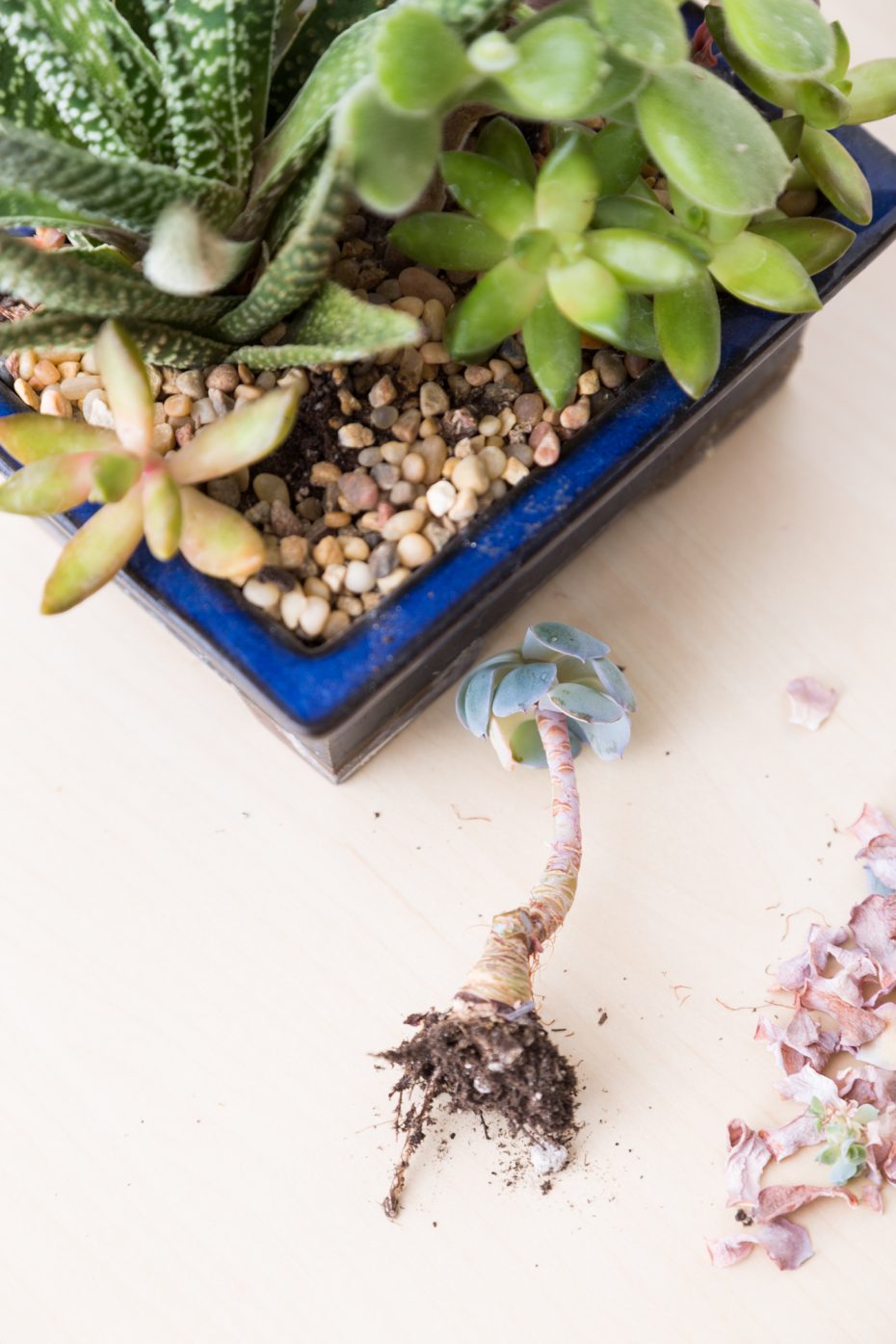
Also make sure to collect any healthy leaves that may fall off. Many of these can be propagated to grow new plants! I don't know about you, but free plants is something I'm always interested in.
Removing dead plants
The Cotelydon tomentosa was really leggy, so initially I cut off the tops. The base plant wasn't doing very well though so I pulled it out. I also pulled out a Crassula perforata that was struggling (off to the side in this photo).
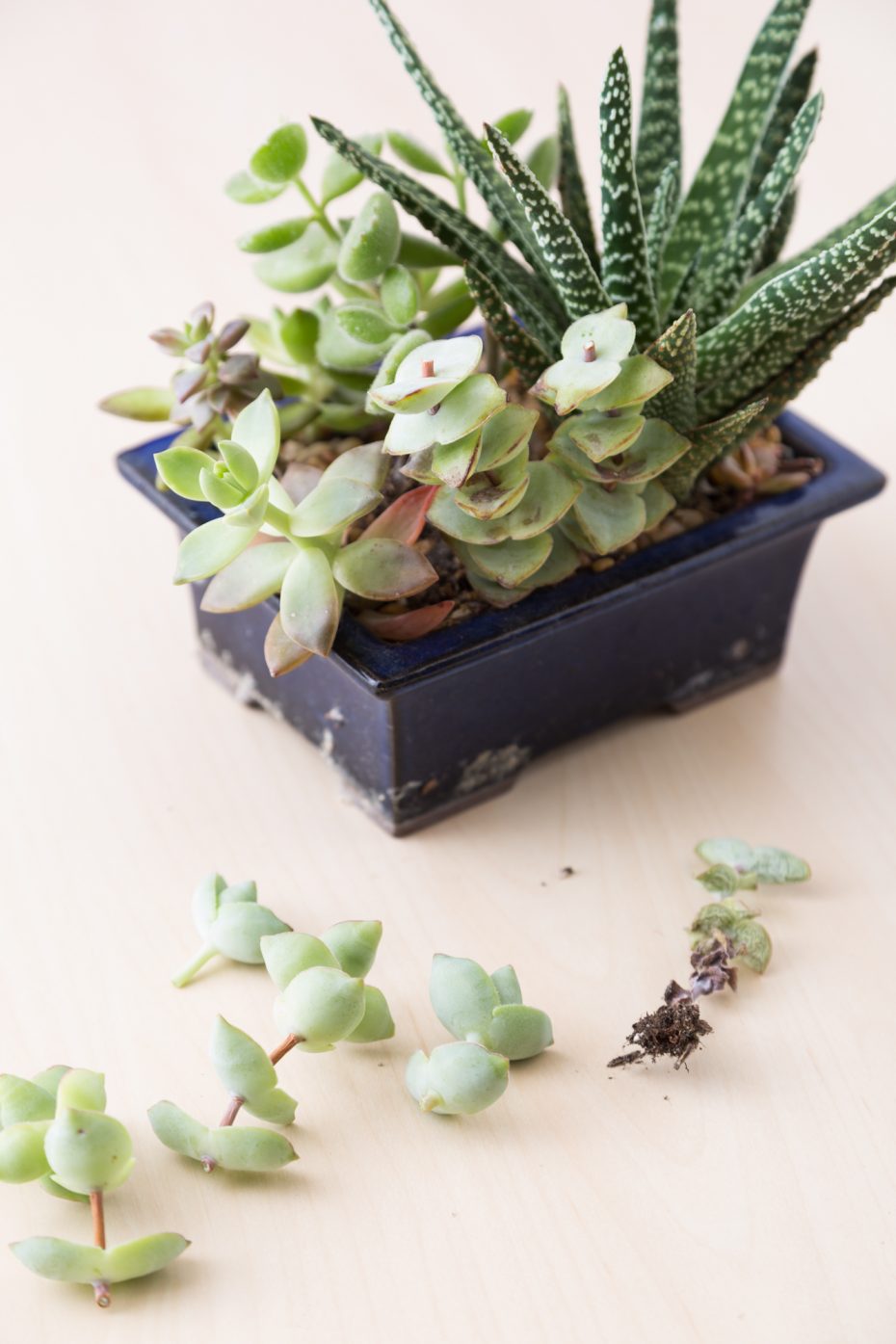
You'll want to remove any dying plants to make room for the new cuttings you've taken. Dying plants or dead plants can actually cause problems in the arrangement. They decay and may spread diseases or even rot to the other plants. So take them out!
Replant the cuttings
After your cuttings have had a chance to dry for about a day, you can replant them in the arrangement. Fill in any holes or gaps where plants were removed. I like to plant my arrangements tight as this helps slow down their growth, keeping the arrangement looking “tidy” longer.
I always try to work with straight stems when I'm using cuttings. If your cutting has a curved end you may want to consider cutting it off so you have a straight end to place in the soil. Be sure to let it dry for at least a day after making the cut.
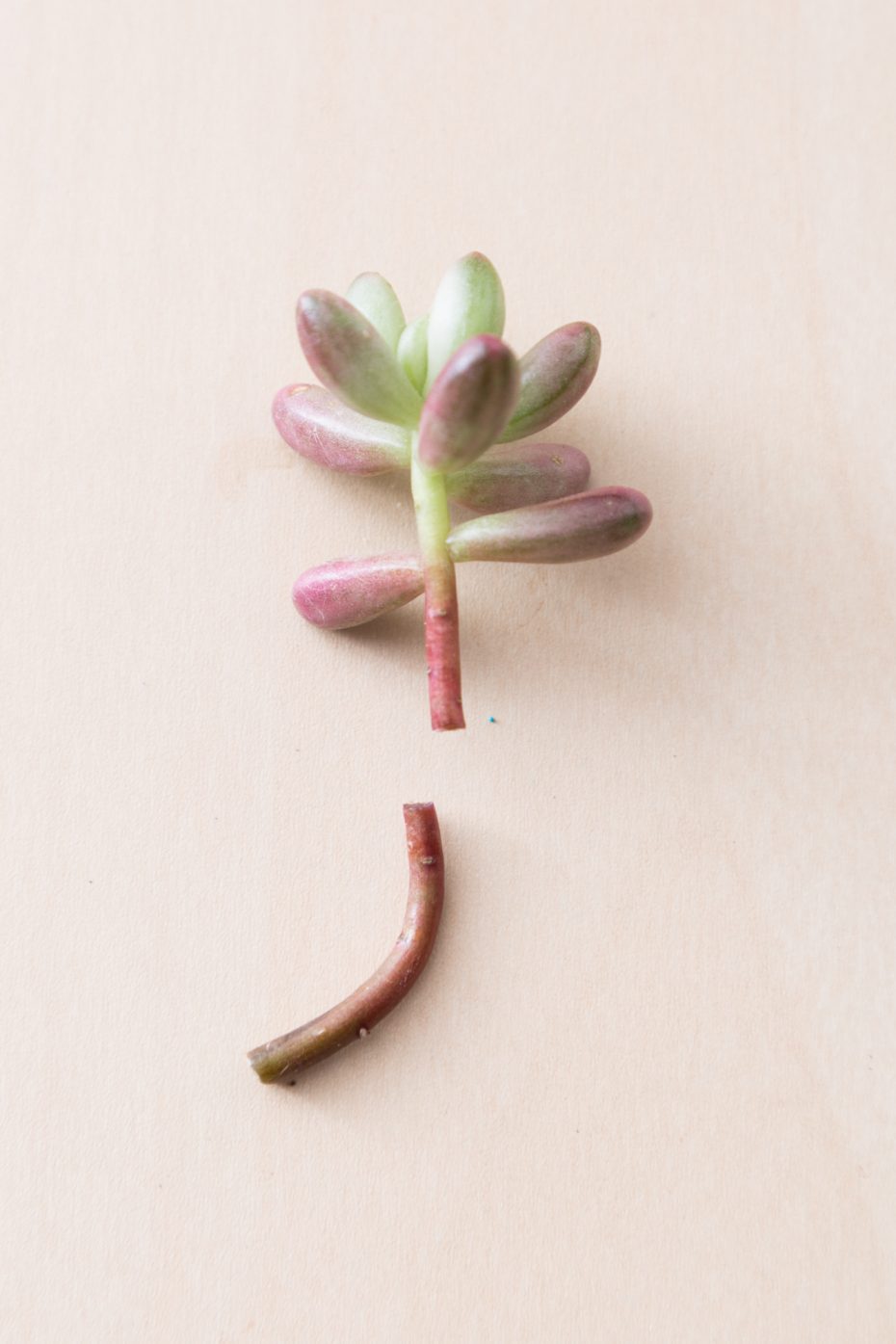
My secret weapon… top dressing!
Even after planting the cuttings from the arrangement you may still have some gaps. Feel free to fill in with cuttings from another arrangements or even rooted succulents. There's no rule that you can only use cuttings from the original arrangement 🙂
The next step is to finish off the arrangement by adding a top dressing. If you're not familiar with top dressings, be sure to look at this post for all the details.
Basically though, they are a decorative rock used to cover the soil in your arrangement. If you have an arrangement that still doesn't look great after pruning, a top dressing can be the magic touch to make it seem professional and clean.
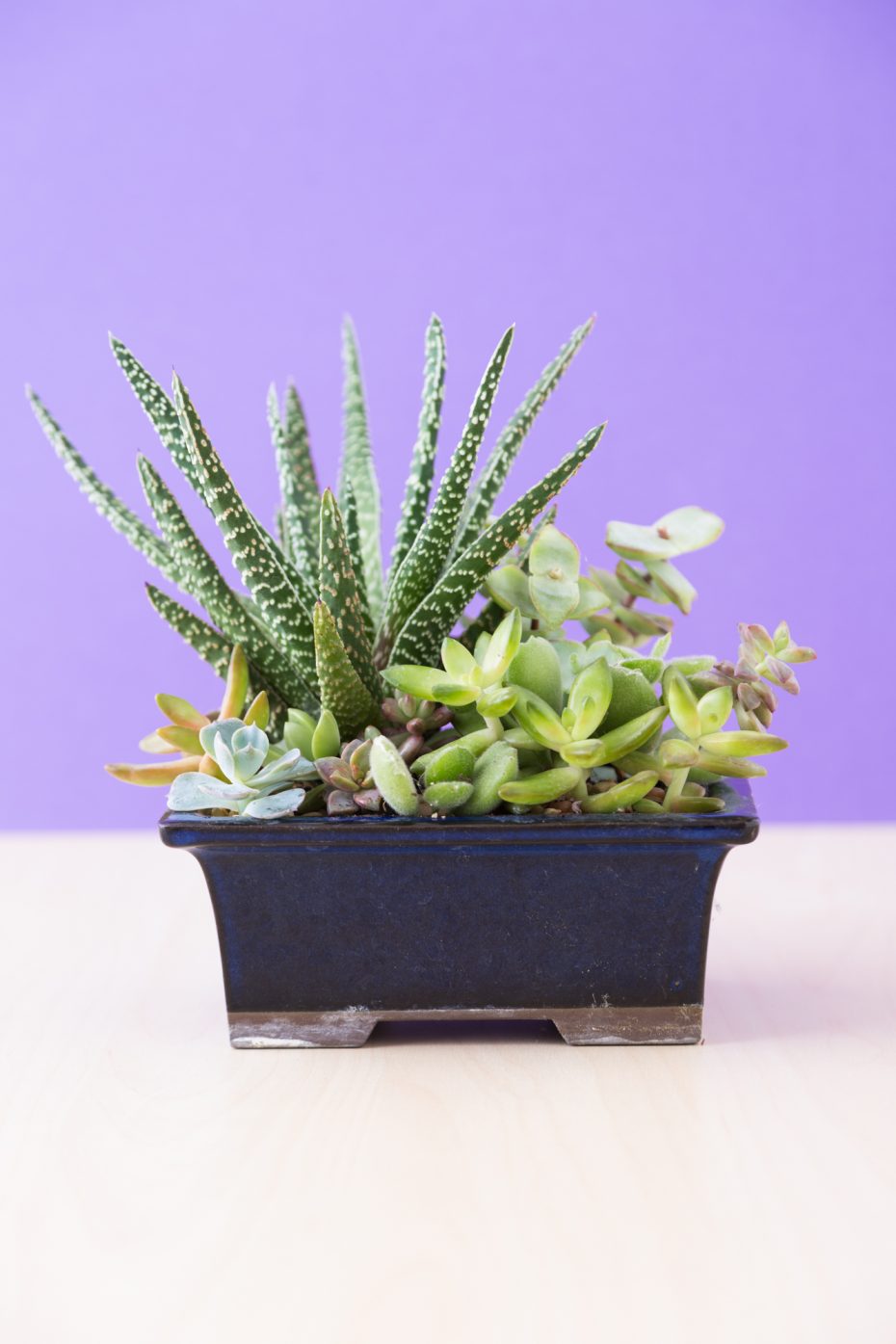
After adding the top dressing, give the arrangement a final look over. See if anything needs a little touch up or extra plants, then…
You're done!
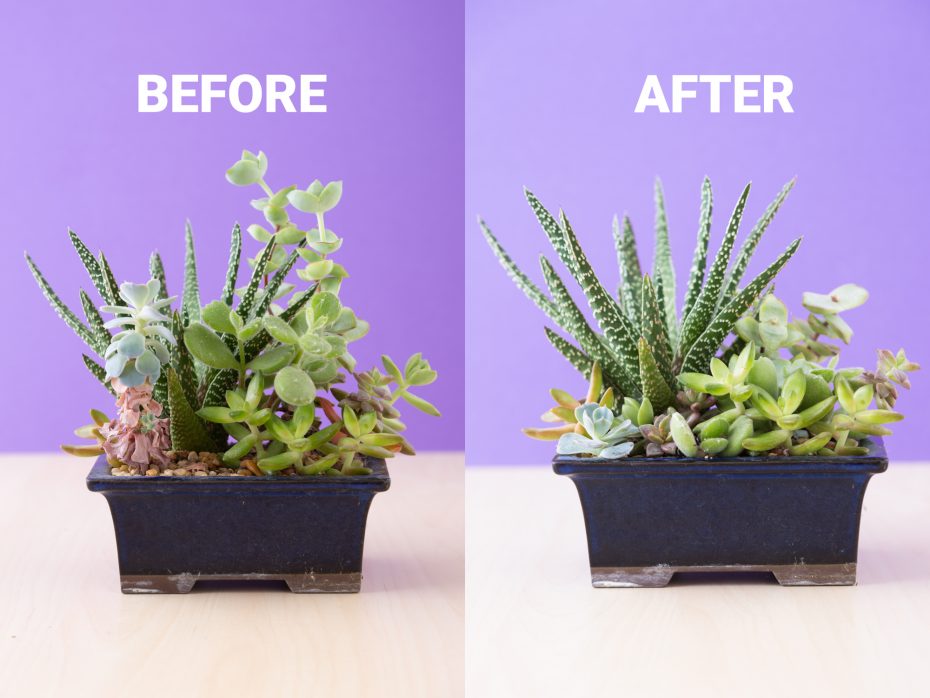
Your arrangement is now looking great again! Don't water your arrangement for at least a day to allow the roots and plants time to heal and adjust.
When it is time to water, make sure to use the soak then dry method to ensure your arrangement stays as healthy as possible. Continue to give it bright indirect sunlight and it will flourish for another few months or year before it needs to be pruned again.
If you keep an eye on your succulents I'm sure you'll recognize when your plants need a little maintenance. Now you'll know what to do 🙂
This article originally appeared on Succulents and Sunshine.